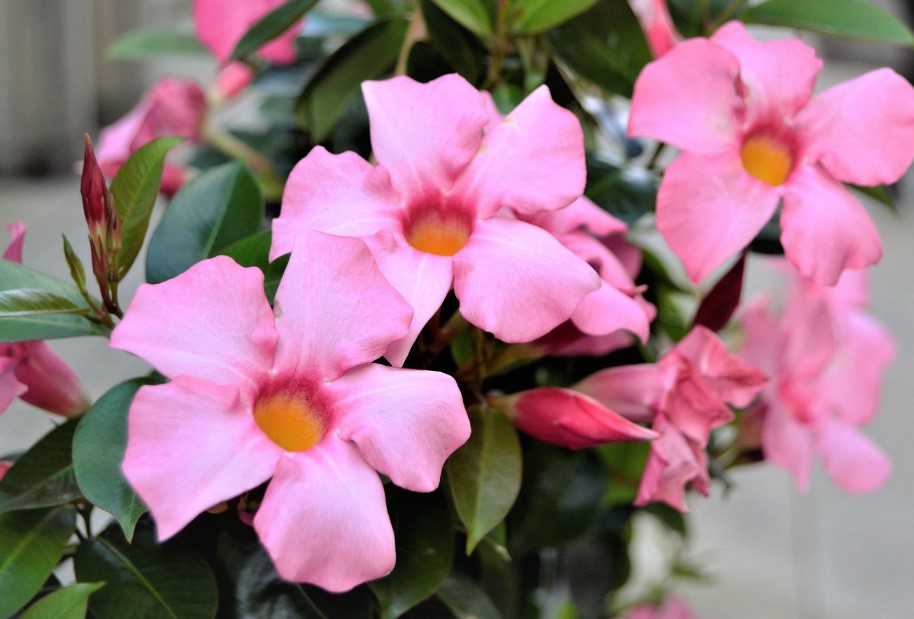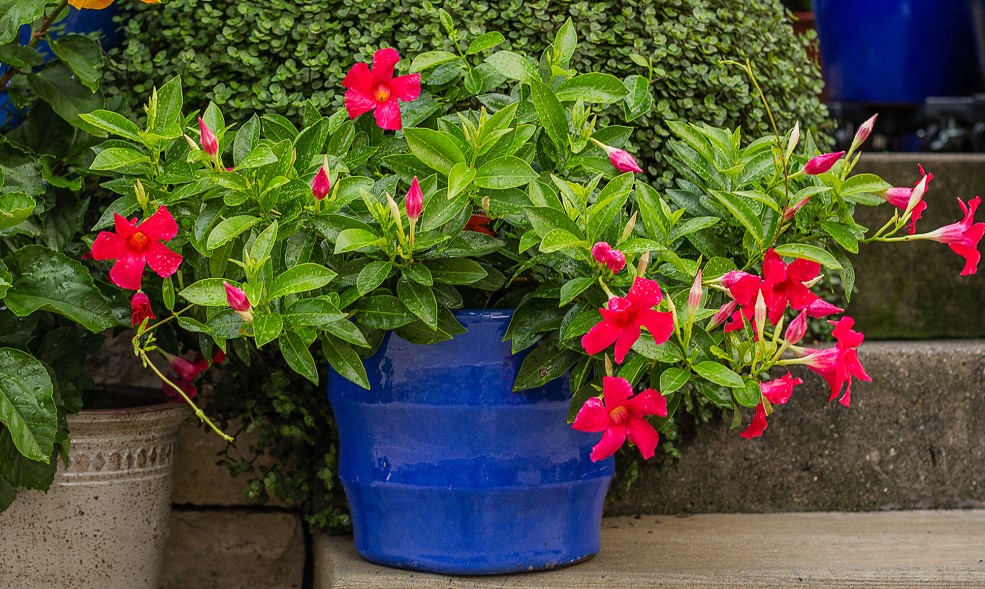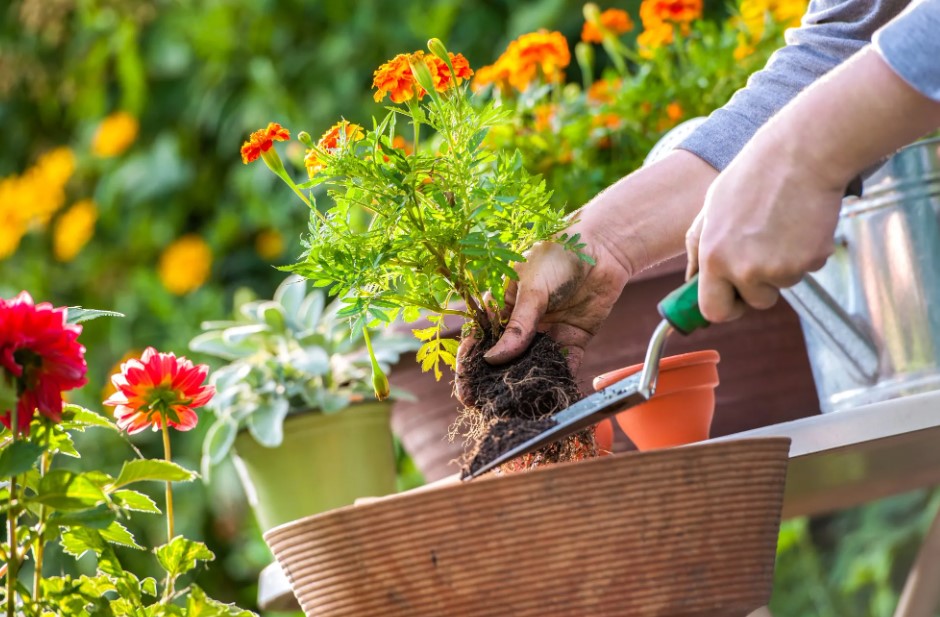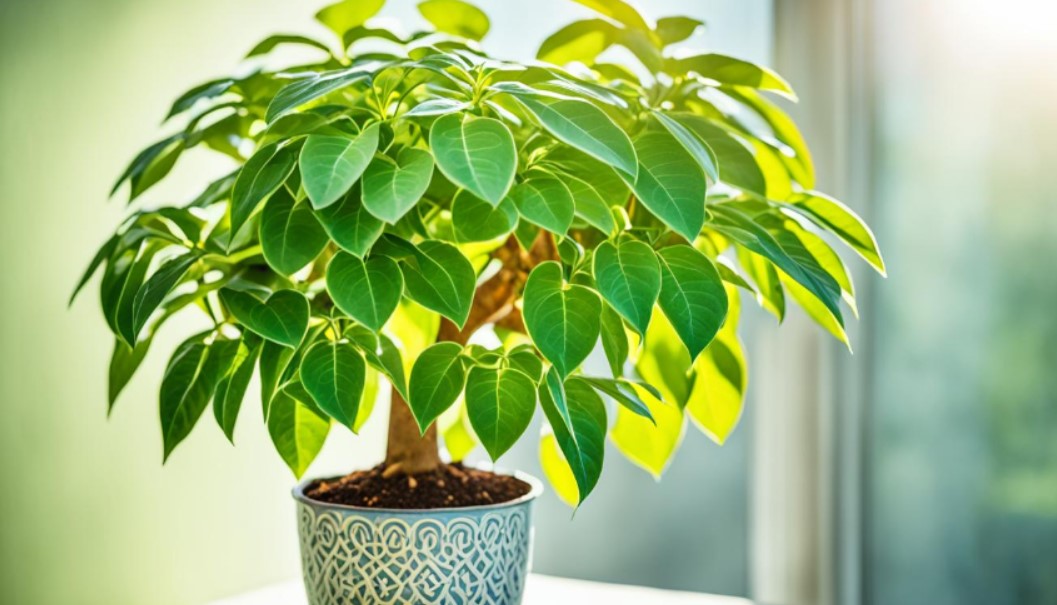Contents
Mandevilla is a beautiful flowering vine known for its lush, vibrant blooms and tropical charm. Whether you’re looking to enhance your garden or add a splash of color to your patio, mandevilla is an excellent choice. This versatile plant can thrive as a climbing vine on a trellis or as a cascading plant in a hanging basket, making it perfect for various garden designs. With its pink, red, and white flowers, mandevilla is a showstopper that can transform any space into a tropical paradise.
Why Choose Mandevilla for Your Garden?
Mandevilla plants are popular among garden enthusiasts for their beauty and resilience. These plants are easy to grow, making them ideal for both beginner and experienced gardeners. They provide long-lasting blooms throughout the summer and into early fall, attracting pollinators like hummingbirds and butterflies. Plus, they’re relatively low-maintenance, thriving in warm climates and bright, indirect sunlight.
Types of Mandevilla
Mandevilla comes in several varieties, each with unique characteristics. Here are some popular types to consider:
- Mandevilla Sanderi – Known for its deep pink blooms, this variety is perfect for adding a pop of color.
- Mandevilla Boliviensis – This variety features elegant white flowers that bring a classic look to any garden.
- Mandevilla Alice du Pont – This classic pink flowering vine is a vigorous grower and ideal for trellises.
- Giant White Mandevilla – As the name suggests, this variety offers large white blooms that create a stunning contrast against its dark green foliage.
How to Plant Mandevilla
Planting mandevilla is relatively simple, but it’s essential to give it the right start for healthy growth. Here’s how to plant mandevilla:
- Choose the Right Location
Mandevilla thrives in full sun to partial shade, making it ideal for sunny patios and gardens. Choose a spot where it can get at least six hours of sunlight daily. If you’re growing mandevilla indoors, place it near a window that receives plenty of light. - Prepare the Soil
Mandevilla plants prefer well-draining soil rich in organic matter. You can use a potting mix designed for flowering plants or amend your garden soil with compost to improve its quality. Ensure the soil has good drainage to prevent root rot. - Planting in Pots or Garden Beds
Mandevilla can be grown in pots or directly in garden beds. If planting in a pot, select one with drainage holes and fill it with the prepared soil. For garden beds, dig a hole that’s twice the size of the root ball, place the plant, and backfill with soil.

Mandevilla Care Tips
Once planted, mandevilla requires minimal care to flourish. Here are some essential tips for keeping your mandevilla healthy and vibrant:
- Watering
Mandevilla plants need regular watering, especially during hot summer months. Keep the soil consistently moist, but avoid waterlogging. Water deeply once a week, allowing the top inch of soil to dry out before the next watering. - Fertilizing
Feed mandevilla with a balanced, water-soluble fertilizer every two weeks during the growing season. This will promote lush foliage and encourage more blooms. Look for a fertilizer high in phosphorus to support flowering. - Pruning
Prune mandevilla regularly to maintain its shape and encourage new growth. Trim back any leggy stems in early spring before the growing season begins. Regular pruning also helps control its size and keeps it looking tidy. - Winter Care
Mandevilla is not frost-tolerant, so it needs protection during the winter. If you live in a region with cold winters, bring your mandevilla indoors or move it to a greenhouse. Keep it in a sunny spot, reduce watering, and avoid fertilizing until spring.
Common Issues and Solutions
Mandevilla is generally a resilient plant, but it can face some common problems:
- Yellow Leaves
This can be a sign of overwatering or poor drainage. Ensure the soil drains well and adjust your watering schedule. - Pests
Mandevilla can be affected by pests like aphids, spider mites, and whiteflies. Treat infestations with insecticidal soap or neem oil, and check your plants regularly. - No Blooms
If your mandevilla isn’t blooming, it might not be getting enough sunlight or nutrients. Ensure it receives plenty of light and fertilize regularly with a bloom-boosting fertilizer.
Growing Mandevilla Indoors
If you don’t have outdoor space, you can still enjoy mandevilla as a houseplant. Keep it near a sunny window and ensure it has ample space to grow. Mandevilla vines can be trained around a small trellis or allowed to cascade over the sides of a pot. Indoors, be mindful of humidity levels; misting the plant occasionally can help mimic its natural tropical environment.
Mandevilla vs. Dipladenia: What’s the Difference?
Many people confuse mandevilla with dipladenia, and while they’re related, they have distinct differences. Dipladenia has smaller, bushier growth and more compact leaves. Its flowers are slightly smaller but just as vibrant. Mandevilla, on the other hand, is a vigorous climber with larger flowers and more extended vines, making it ideal for vertical spaces.
Conclusion
Mandevilla is a fantastic addition to any garden or home, providing a tropical feel with minimal effort. With its stunning blooms and ability to attract pollinators, it’s perfect for anyone looking to create a vibrant outdoor oasis. By following these simple care tips, you can enjoy mandevilla’s beauty year after year.
Whether you’re a gardening novice or an experienced green thumb, mandevilla is a rewarding plant that brings color and life to any setting. With a little care and attention, you’ll be able to enjoy its lush flowers and vigorous growth all season long. So why not give mandevilla a try in your garden? You won’t be disappointed by the beauty it brings to your outdoor space.
Frequently Asked Questions
Can mandevilla grow in full shade?
Mandevilla needs at least partial sun to thrive. While it can tolerate some shade, full sun is ideal for robust growth and flowering.
How often should I water my mandevilla?
Water mandevilla once a week, allowing the top inch of soil to dry out before watering again. In hotter climates, you may need to water more frequently.
Is mandevilla poisonous to pets?
Yes, mandevilla is toxic to pets if ingested. Keep it out of reach of pets and children to avoid any issues.
When should I bring my mandevilla indoors?
Bring mandevilla indoors before the first frost. It cannot withstand freezing temperatures, so it’s best to move it to a warm, sunny spot indoors during winter.
Can mandevilla be grown in containers?
Absolutely! Mandevilla grows well in containers, which makes it versatile for patios, decks, and even indoor spaces.
You May Also Read:
Matthew Perry Address: Inside the Star’s Homes and Residences





